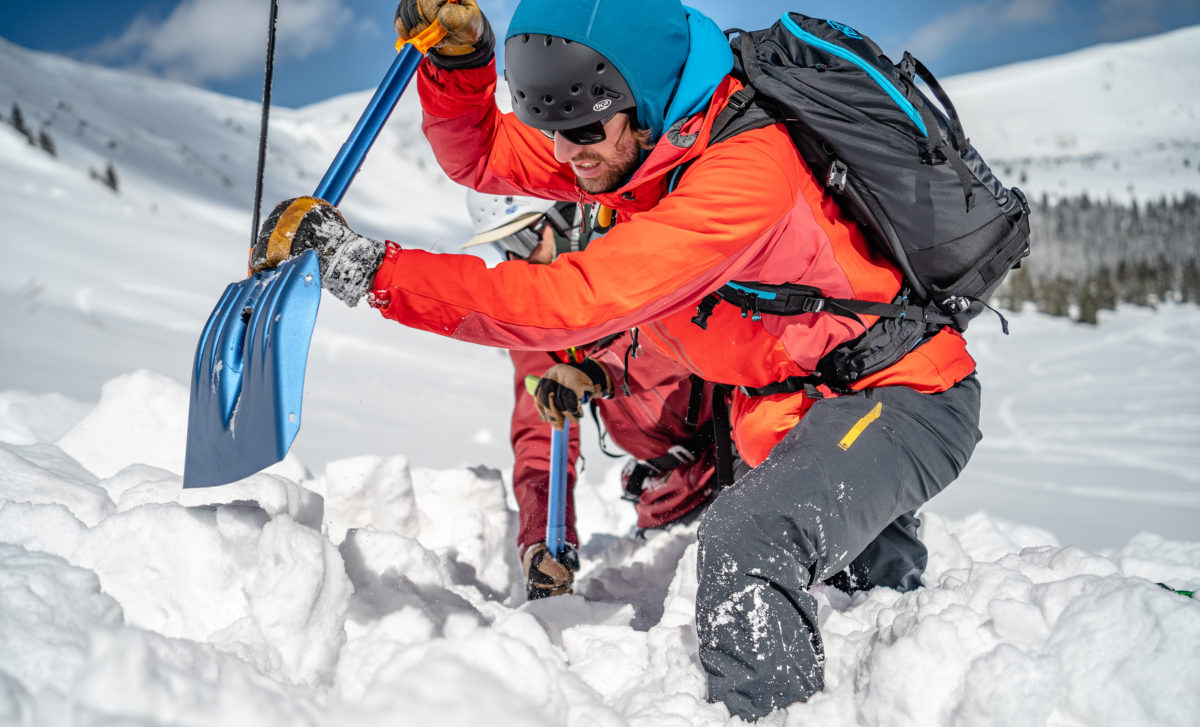Photo by BCA
"Excavator" is a must-have item for backcountry. The shaft (handle) and blade (scoop) can be disassembled and folded compactly so that it can be stored in a backpack. Weight and strength also vary depending on the materials used. What points should I focus on when choosing one for the first time, or when it's time to buy a new one?
The role of excavators
Excavators are used in a variety of backcountry (BC) situations.
The first is its role as an avalanche gear. Along with the Beacon Probe, the shovel, which is an essential gear for snow rescue, is indispensable for rescuing people buried by avalanches. Once the beacons and probes have determined the location of the burials, they must be dug up immediately with a shovel.
If buried by an avalanche, the survival rate is said to drop to 92% within 15 minutes after burial, and to 30% 35 minutes after burial. The excavator's role is crucial, as the performance of the excavator largely determines how quickly a buried subject can be excavated. The shovel is also useful when performing pit checks (avalanche checks) to see if the snow is in a weak layer.
Other than that, when I get stuck in a sudden storm in the snowy mountains, or when I get injured and can't move, I sometimes dig a snow cave and bivouac. A shovel is essential for digging snow and making snow caves. In addition, when setting up a tent on a tour where you stay overnight in the mountains, you can harden the surface of the snow, pile up snow to make weights to fix the tent, and make a windbreak wall with snow blocks around the tent. and active in a wide range of fields.
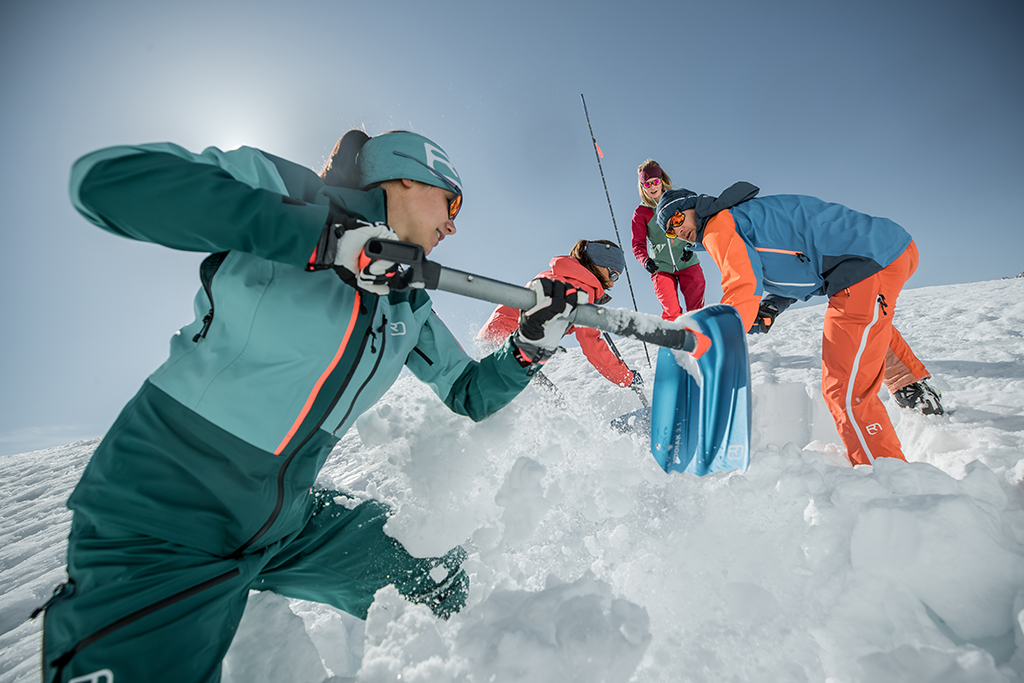
How the excavator works
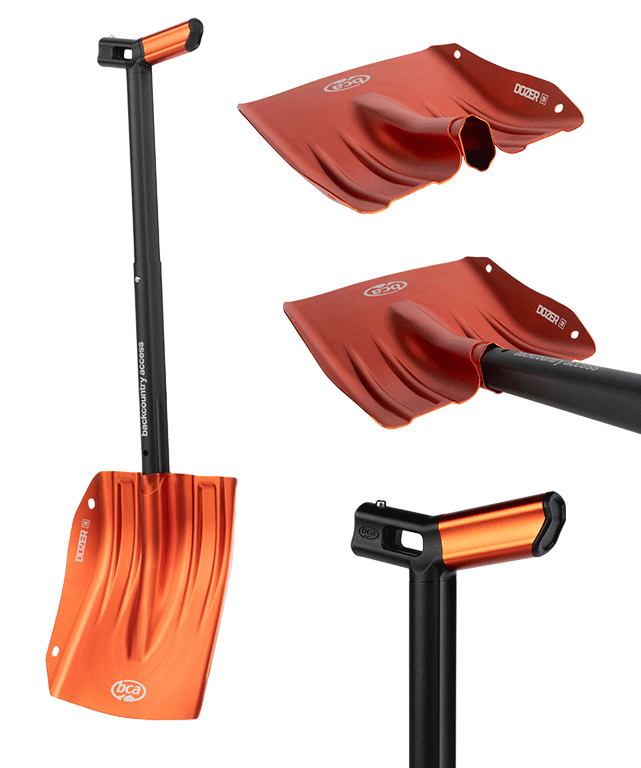
A shovel consists of a blade and a shaft (handle). The shaft (handle) can be adjusted in length and separated from the blade, making it easy to store and carry in a backpack.
There are also models with a hoe-shaped shaft and models that can be replaced with an ice ax.
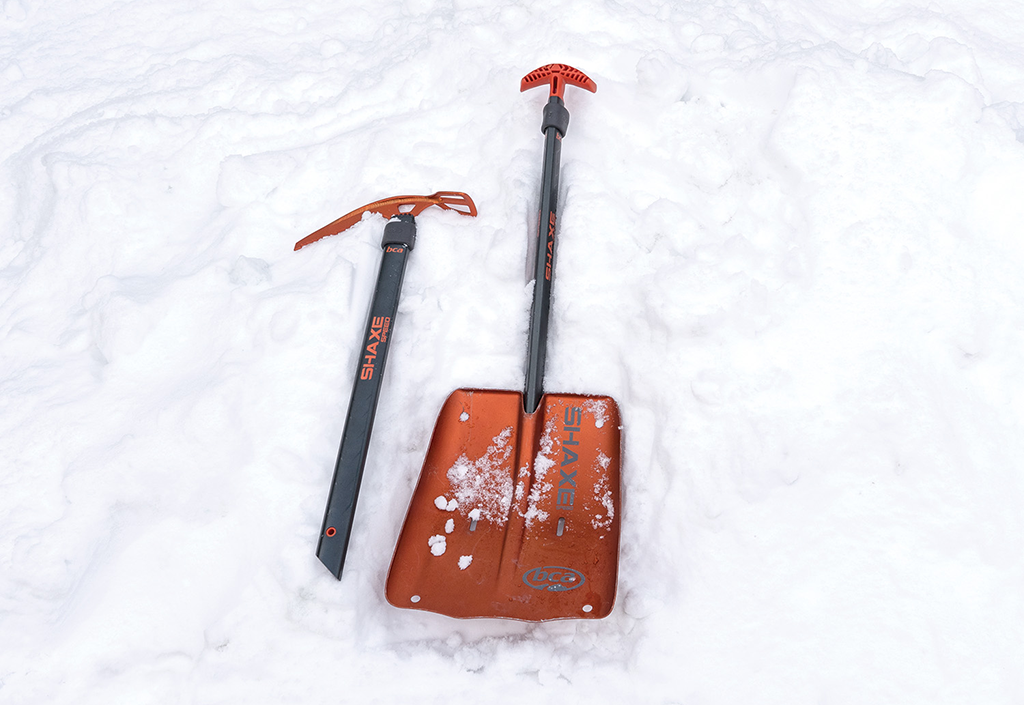
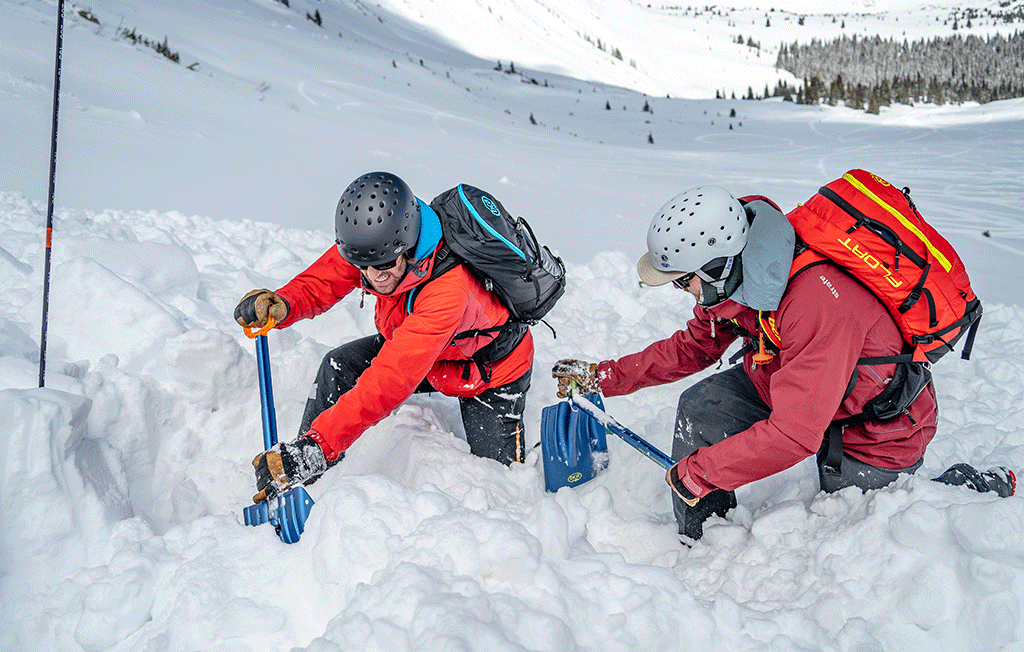
has the advantage of shoveling snow easily, making it convenient for clearing snow in tight spaces.
How to choose
There are two main types of shovels: aluminum metal and plastic, but aluminum is by far the stronger one. Plastic ones don't dig well in hard snow, and they can crack at low temperatures or when subjected to impact. On the other hand, in terms of weight, plastic is lighter and easier to handle. But in BC you should choose aluminum for safety.
On top of that, the points of choosing an excavator are "blade shape and size", "shaft shape and length", "weight" and "multifunctionality".
In an avalanche search, a large blade that throws a lot of snow at once is needed to dig out buried bodies as quickly as possible. The shape of the blade should be flat and square. If the shoulders are sloping at the top, it will be difficult to put your feet on and kick into the snow, so the shoulders should be straight.
The handle of the shaft should be easy to grip even with gloves on. The T type is a strong shaft (handle) with good power transmission, and it is better to be as light as possible for work that requires power.
I would like to keep these points in mind when choosing an excavator and choose one that matches my BC snow life.

